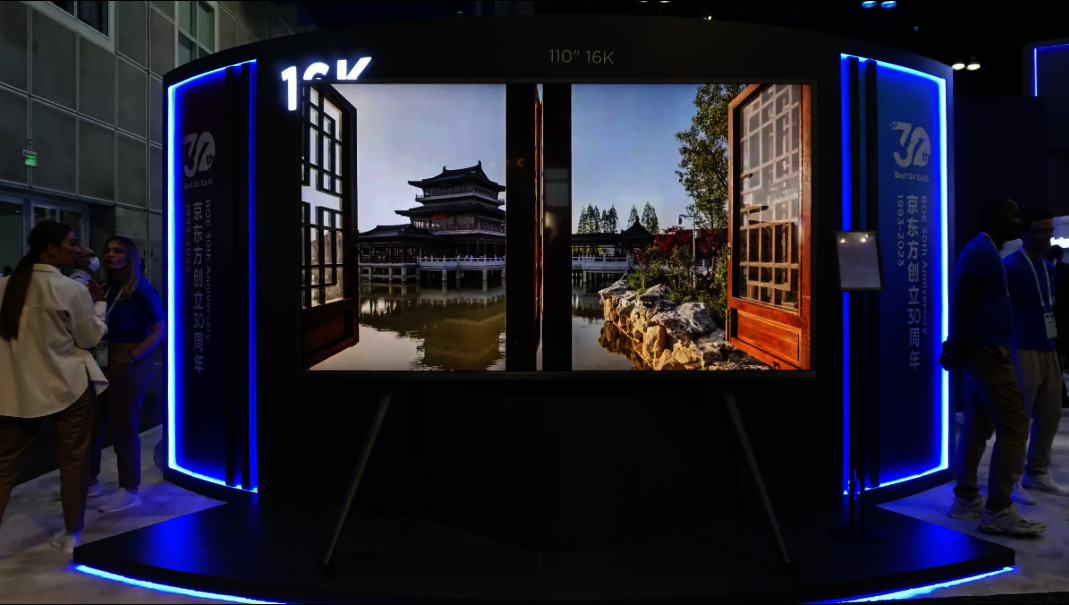China-based display maker BOE showed off what is said to be the world’s first-ever 110-inch, 16K resolution television display prototype at SID Display Week last week.

The enormous screen has four-times as many pixels as the biggest and best 8K televisions, and 16-times as many as any 4K TV. The display was made partly to celebrate BOE’s 30-year anniversary and also its expertise in creating cutting-edge technology that goes well beyond the capabilities of any TV consumers can buy.
The 110-inch frame is bigger than many home theatre projectors and it completely outdoes them in terms of performance, with its 16K resolution showing off far more intricate detail than any projector can offer.
Of course, consumers won’t be able to get their hands on this beast of a TV anytime soon. It’s still a prototype, and BOE doesn’t actually make televisions itself - it only manufactures the displays, which are then sold to TV brands. So it will be down to individual TV manufacturers to determine if they actually want to sell such a beastly-sized TV with pristine detail. Prospective buyers should also beware that BOE has cut quite a few corners in the design, with brightness maxing out at a mere 400 nits, for example, much lower than the 1,400 nits of Samsung’s latest QD-OLED TV, the Samsung S95C.
BOE’s 110-inch beast is pretty average in other ways too, with a mere 60Hz frame rate instead of the 120Hz that is now standard on most premium TVs today. It’s an LCD display too, meaning it won’t hit the same level of picture accuracy as OLED, QD-OLED or even Mini-LED displays can. On the back of the TV, there’s a somewhat messy array of 16 DisplayPort cables that are required to funnel visual data to it.

In other words, the TV is really just a demonstration of the benefits of 16K resolution, but those are somewhat questionable anyway. For instance, while it sounds impressive, the fact is that not many people really see any noticeable difference with higher resolution, which explains why 8K televisions are still extremely rare. That’s due to the nature of the human eye, which has limits on the detail it can discern at an average viewing distance
There’s also the issue of 16K content. Native 8K content is extremely hard to find anyway, so 16K footage is likely to be nonexistent. Indeed, BOE was forced to upscale 8K content just to have something to display at the exhibit, as it couldn't get its hands on true 16K video. At present, Hollywood’s biggest film studios have not even bothered to embrace 8K, so they certainly won’t be considering shooting anything in 16K for some time to come.
As such, it’s hard to see BOE’s 16K concept display becoming anything more than a concept anytime soon, not matter how impressive it may look.